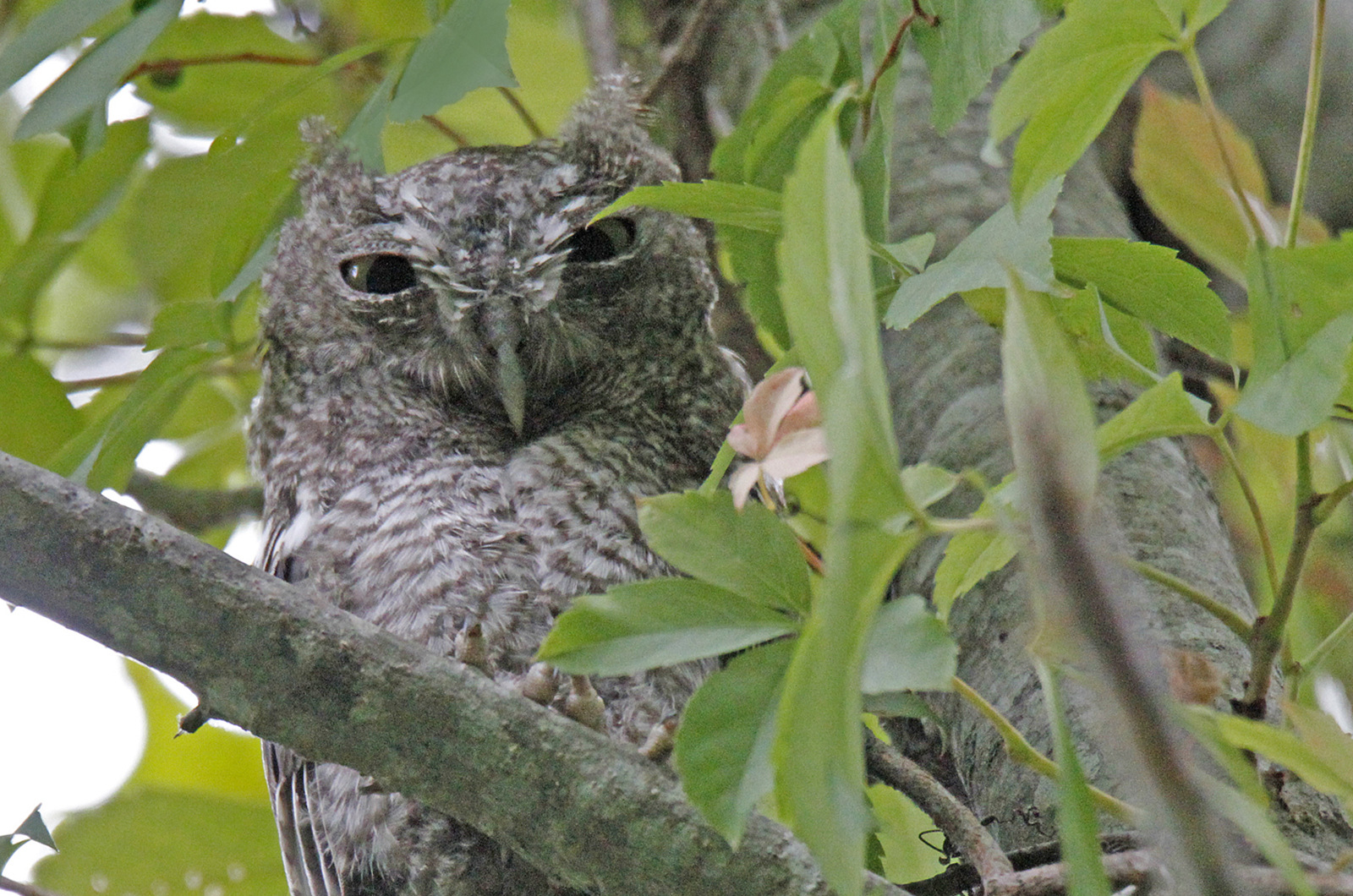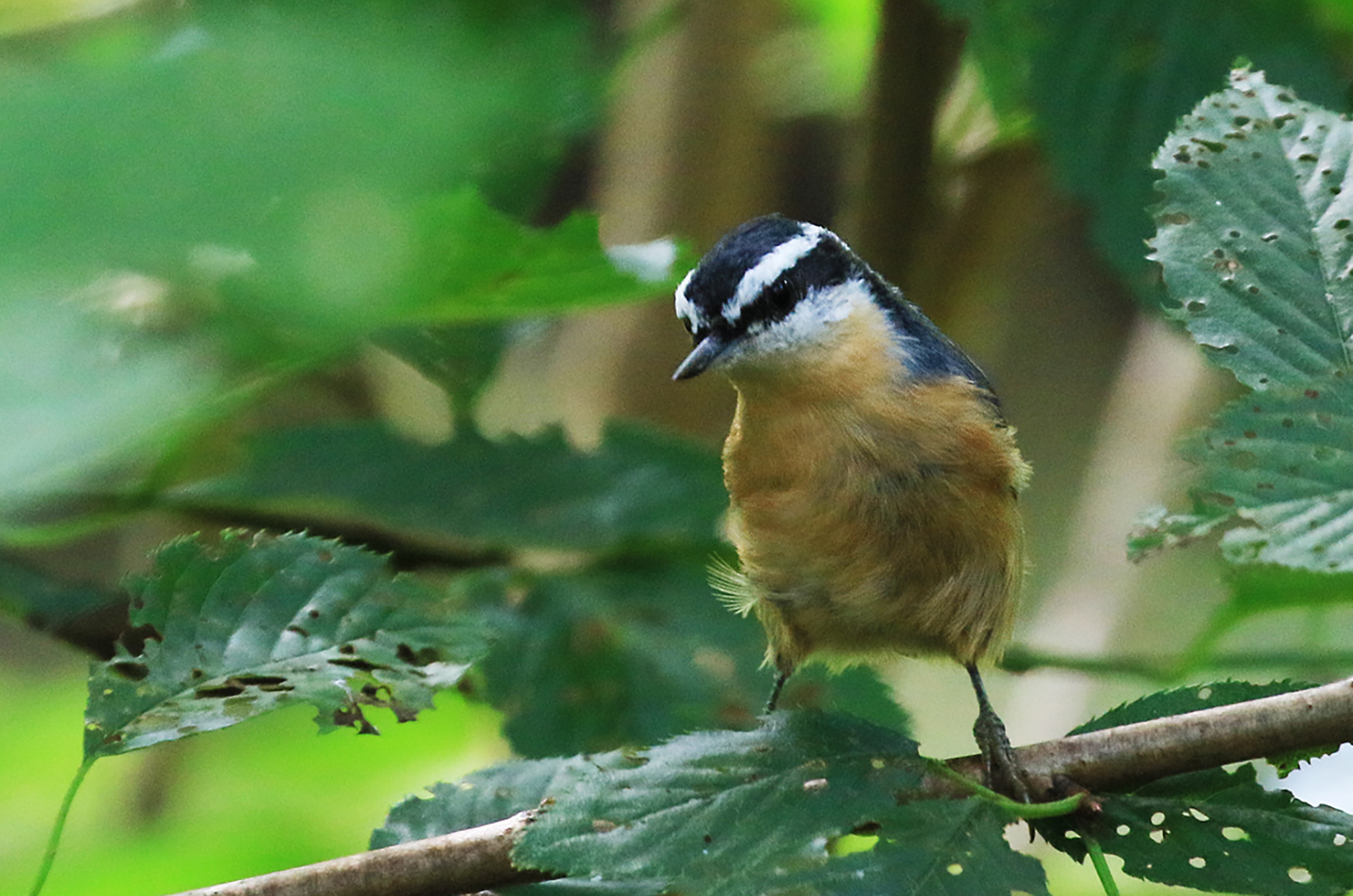Only two olive-sided flycatchers have been seen in the spring according to the website e-bird’s records. Now we have a third spring sighting, as Jenna Albaugh and Sky Kardell photographed one at Wasque Reservation on June 2. The previous two spring sightings were in West Tisbury (in 2006) and Edgartown (in 1996).
A Wilson’s phalarope has only been seen six times according to e-bird, the most recent of which was in 1998. So Charles Morano’s sighting of one at John Butler’s Mudhole on May 29 is the first since then, and the only one in this century.
Sky Kardell spotted a jaeger (probably a parasitic jaeger) doing jaegerly things off Leland Beach on June 1. Jaegers are kleptoparasites (our big word of the day) meaning that they make much of their living stealing food from other birds. The jaegers are amazingly strong fliers, living on the ocean except for nesting in the Arctic.
Razorbills are a regular winter visitor on the Island, but they have generally left for their northern nesting grounds by now. During a recent year, two of them were here through the summer on Menemsha Pond. Jenna Albaugh saw one from Cape Pogue on May 27; will it linger or depart?
It is the nesting season, and it is fun to observe nesting behaviors. Of course seeing a nest or young birds with their parents always proves their nesting. More challenging is to see a bird carrying vegetation for nest building or carrying food to feed their youngsters.
The most unusual observation was by Sky Kardell, who was able to find the nest of the nocturnal chuck-will’s-widow, which is a nocturnal species that reliably chants at dusk at this time of the year, so we believe that it is nesting. An unexpected daytime chant followed by a careful search — they nest on the ground — led to finding the nest.
Nancy Weaver observed Canada geese with their 14 goslings at Eel Pond on May 31. Eve Jacobs-Carnahan found killdeer with two chicks at Long Point on May 28, while Walt Looney found a killdeer with three chicks on June 1, also at Long Point. Chicks can be incredibly difficult to count because they are so small and they are constantly running around.
At Eel Pond on May 31 Nancy Weaver found an American oystercatcher with two chicks, the same day and location that Bridget Dunnigan and Sea Williams observed oystercatchers with three chicks. Early nesting beach birds are important. These chicks will fledge in late June or early July if they are left undisturbed. Jerry Twomey saw the first baby screech owl appearing from inside one of his owl boxes.
Please note that when you find a nest with either eggs or chicks that seem to be abandoned, the parents are likely hiding because you are nearby. Please, please and please again, move further away and watch the parents resume caring for their offspring.
Short-billed dowitchers (chunky sandpipers) have made an appearance. Sky Kardell spotted six on Cape Pogue on May 19 and this week Bob Shriber and Nancy Nordin saw one on Norton Point on May 26. Clare Mungovan found two on Hine’s Point on May 29, and David Padulo observed three on Norton Point on June 2.
Two other sandpipers have become more common this week. Semipalmated sandpipers have been seen six times. Sky Kardell saw eight at Long Point May 23 and one on Cape Pogue May 25. David Padulo found two on May 26, and on May 31 Bridget Dunnidgan, Sea Williams, Chris Scott and Nancy Weaver found one each, all at Sheriff’s Meadow Sanctuary.
Least sandpipers were seen three times: Jeff Bernier found one at Norton Point on May 29, Bob Shriber located two at Lobsterville on May 30, and Chris Scott located one least sandpiper at Eel Pond on May 31.
Susan Whiting and Ruth Richards spotted a great blue heron at the Oak Bluffs pumping station on May 29, and Ben Schmandt and Mason Bunker found one at Lucy Vincent on May 31. These large herons are supposed to be in their nesting colonies now, so why are they here?
Six red-throated loons are hanging out off Lobsterville — two in Menemsha Channel, two in Vineyard Haven Harbor and one at the Oak Bluffs pumping station, as reported by Lanny McDowell, Sharon Simonin, Bob Shriber, Francesca Zeta, Susan Whiting, Ruth Richards and myself. Despite their name, common loons are less common now. But this week David Padulo found one in breeding plumage from Great Rock Bight, while Wendy and Anne Culbert and I saw one off Squibnocket Beach.
In other miscellaneous news, Sky Kardell spotted five species of swallows at the Hoft farm on May 27: two purple martins, 10 bank, 40 tree, one rough-winged and 12 barn swallows.
David Padulo saw one wood thrush at Menemsha Hills on June 1. Bridget Dunnigan spotted three field sparrows and four red-breasted nuthatches in the State Forest on May 29, while I heard and saw a very noisy one at the state forest on June 2. David Cash also located two at Seven Gates on June 1.
More willow flycatchers have arrived from their southern wintering grounds. Ruth Richards spotted one at Lucy Vincent Beach on May 28, probably the same one that Nancy Weaver saw on May 30. Sky Kardell found one at Wasque on June 1, and Bob Shriber located one along Squibnocket Road on May 31. He finds one there every year and suspects that they nest there.
House wrens have spread across the Island in the past 20 years. Brian and Luke Ulicny found one at the Mill Pond in West Tisbury on both May 26 and 27. Matt Pelikan located one near the West Tisbury School on May 28, and Rich Couse saw one on June 1 at Waskosim’s Rock. Margaret Curtin spotted a yellow-bellied sapsucker at Central avenue Vineyard Haven on June 1, Charles Morano found an indigo bunting at Donaldbin Close on May 26, and Lanny McDowell found a horned lark on State Beach on May 22.
Please email your sightings to birds@vineyardgazette.com.
Robert Culbert is an ecological consultant with Nature Watch living in Vineyard Haven.








Comments
Comment policy »